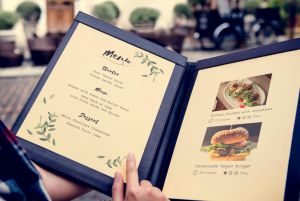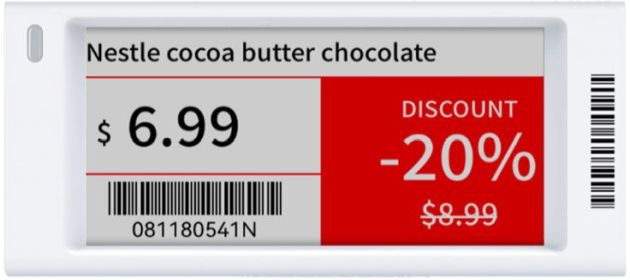Price is one of the 4Ps of marketing: Product, Price, Place, and Promotion.
I’ve covered pricing methods here and here, and pricing paradoxes here and here.
This post is about price – the number that’s printed on the sticker.
Let’s get on with it.
In a free market, price is discovered by interplay of demand-supply forces. That said, not all products are traded on electronic exchanges that enable automated price discovery, so the supplier of many products quotes a certain price and the customer accepts it by buying the product or rejects it by not buying it; and the supplier responds to that feedback either by reducing the price or withdrawing the product. (There’s a small category of products called Voblen Goods, where the demand goes up when price goes up, and rejection could be a sign that the price is too low, so the correct response from the supplier wishing to stay in the market is to increase the price.)
In theory, prices can vary from one customer to another (not legal advice). In practice, prices are customized for each customer only in B2B and a handful of B2C industries like airlines, hotels, and rideshare (although that list is rapidly expanding to fast food, retail, and other industries, according to @martechismktg).
That said, price lists are common in almost all industries, either due to industry practice or regulation, or both. For example:
- IT hardware manufacturers release a price list for internal circulation among their sales reps and dealers.
- Some SAAS providers publish prices for different plans on their websites. (But many don’t.)
- In ecommerce, the price of individual items is listed on the product listing page.
- Restaurants have a menu listing dishes and their prices.
The price here is List Price.
In India, there’s also a concept of MRP or Maximum Retail Price. MRP is applicable on packaged goods across multiple industries e.g. carbonated beverages, chips, hair oil, mineral water, toothpaste, and so on. The “maximum” in “maximum retail price” conveys the impression that there’s some price control. Accordingly, many people believe that some statutory body has set the maximum price, presumably based on “cost plus fair margin”. This is not true. MRP is decided by the manufacturer. While the seller cannot sell above MRP, he can sell below it. The manufacturer can set MRP basis Value, What The Traffic Can Bear, and many other pricing methods apart from cost-plus, as I described in Resolving The Tussle Between Different Pricing Methods.
List Price is not MRP.
When the same LED lamp costs INR 450 & 950 at two different stores, I felt MRP is not such a bad concept – even if it’s uniquely Indian.
— GTM360 (@GTM360) July 27, 2016
Many countries have the concept of MSRP or Maximum Suggested Retail Price. Sellers are free to sell above it but most of them don’t. Like MRP, sellers can sell below MSRP.
Over the years, I’ve had several interesting trysts with price:
1. Channelwise MRP
Like me, you might have noticed that a popular brand of mineral water costs INR 100 at the airport whereas a bottle of the same brand costs only INR 30 in a high street store in the city.
Coca Cola and other packaged products that are subject to MRP have asserted that the same product can have different MRP across different channels. According to Economic Times article titled At some Coca-Cola exclusive stores, a can of Coke worth Rs 30 costs Rs 100:
A Coca-Cola spokesperson said in an email revert that it is legislatively recognised and accepted that different maximum retail prices (MRPs) can be declared on different packages even if they contain identical products in the same quantity.
The above article is from 2016. Eight years later, given that the 100 v. 30 incidences still prevails, Coca Cola’s contention is probably right.
Accordingly, the same bottle of mineral water can legitimately have MRP of 100 at airport and MRP of 30 at a high street store (not legal advice).
2. Menu premium
 Restaurants are not subject to MRP. But they do have a menu with prices printed on them (except one restaurant that I’ll come to in a bit).
Restaurants are not subject to MRP. But they do have a menu with prices printed on them (except one restaurant that I’ll come to in a bit).
When you order something on a food delivery app like Swiggy or Zomato, you pay a base price for the food and an extra delivery charge. (I know there are other extras like packing charge, platform charge, etc. but they’re not relevant in the current context and can be conveniently ignored). As a diner, you might assume that the base price of a certain item in the delivery app’s price list (“Delivery Menu”) is the same as the price of the said item in the menu at the restaurant (“Dine-in Menu”).
You may be right for some restaurants but not for many restaurants that levy what I call a Menu Premium. If the price of a certain item in the Dine-in Menu is, say, INR 100, then the price of the same item on the Delivery Menu may be, say, INR 130, which means a Menu Premium of INR 30 i.e. 30%. (In addition, there’d be a delivery charge.)
When you use Swiggy / Zomato from your home or office, you’d only see the Delivery Menu figure of INR 130 and might not know that the same item is listed at INR 100 on the Dine-in Menu.
If you somehow get wind of the difference of INR 30 between the Delivery Menu and Dine-in Menu, and quiz the food delivery company about it, you might be told that the restaurant decides the price on the Delivery Menu and that the food delivery company has no say in the matter. If you ask the restaurant about the price difference, you’d be told that it receives no more than the price on the Dine-in Menu from the food delivery company.
Restaurant is trying to mislead you. Zomato gets him customer. He has to pay a commission for that and be willing to accept less than dine-in menu price. If he’s still getting the same price as dine-in, he has obviously hiked his price on Zomato. I believe Zomato’s version.
— Ketharaman Swaminathan (@s_ketharaman) July 28, 2024
You’d need to infer from the above obfuscated statements that the restaurant is passing on whatever rake it’s paying the food delivery company (typicaly 20-30%) to you.
A lot of consumers urge regulators to crack down on menu premium.
I doubt if the government will intervene since restaurants are not subject to price control or MRP, and can charge whatever prices they want and quote different prices on different channels (not legal advice).
Secondly, even if some overzealous regulator intervenes, there’s nothing stopping restaurants from copying the yesteryear playbook of GroupOn and other group buying companies. GroupOn customers would see a price of 1400 700 bucks for 12 x 45-minute spa treatments on the app whereas walk-in customers would get 15 x 50-minute spa treatments for 1000 bucks. The difference in SKU makes it impossible to compare the dine-in and in-app prices and prove that there’s a menu premium.
I’ve long suspected is that food is worse & smaller when delivered.
Some quantification:
A Chipotle regular calculated the difference when ordering in-person vs. delivered and found that in-person orders were 16.5% bigger!
Lots of important nudges are delivered in-person pic.twitter.com/nPHH5jQV2a
— Sheel Mohnot (@pitdesi) August 6, 2024
So, is there no solution to this?
I think ONDC could kill – or considerably reduce – the menu premium practice.
A couple of years ago, they predicted that ONDC would kill the Menu Premium charged by Restaurants via Food Delivery companies. Anyone knows how that’s working out?
— Ketharaman Swaminathan (@s_ketharaman) July 28, 2024
3. Priceless menu!
Talking of restaurant menus with prices, there’s one exception. The menu of Zodiac Grille in Taj Mahal Hotel Bombay only listed the dishes on offer without specifying their prices, and left it to diners to pay whatever they felt the meal was worth. Per anecdata, 88% of diners overpaid. However, the restaurant eventually shut down, so I’d take that stat with a shaker – er, pinch – of salt.
4. Electronic shelf label
 Gas stations in Germany implemented dynamic prices for petrol and diesel even when I was there in the early 2000s. Every now and then, somebody would climb up a ladder to change the prices on display on the so-called price totem.
Gas stations in Germany implemented dynamic prices for petrol and diesel even when I was there in the early 2000s. Every now and then, somebody would climb up a ladder to change the prices on display on the so-called price totem.
While retailers have been toying with dynamic prices for a long time, the high labor costs of changing price tags on tens of thousands of products in supermarket shelves has deterred them from implementing the best practice so far.
Enter Electronic Shelf Label aka Digital Shelf Label.
These are e-paper tags attached to store shelves with price displayed on them. Prices can be changed centrally from the retailer’s HQ without any manual intervention at the individual store level, thus slashing the cost of implementing price changes.
I recently saw ESLs at an outlet of an electronics retail major at a nearby mall. The e-paper was so good I thought it was a normal paper tag. It was only when a salesman took one out (to replace the battery?) that I realized it was an electronic shelf label.
5. Unit price
I first saw unit price of items on the shelves of supermarkets in the Netherlands in ca. 2002. Suppose I’m shopping for instant coffee. I’d see two brands as follows:
- Brand A: 500 gms, EUR 4, 0.8 cents / gm
- Brand B: 750 gms, EUR 7, 0.93 cents / gm.
As you can see, the display of unit prices makes it easy to do comparison shopping.
I’ve been seeing unit price on product labels in India since 2022. I don’t recall reading anything about it, so I’m guessing this is an industry initiative rather than regulatory mandate. Kudos to FMCG and other industries for implementing this measure.
6. Sale
No discussion on price can be complete without talking about sales. These are periods when retailers sell some or all of their goods at discounted prices.
 In Germany, by law, stores can run storewide sales only twice a year – once at close of summer (Sommer Schluss Verkauf) and once at close of winter (Winter Schluss Verkauf). During these sales, every SKU in the store is discounted. However, retailers are free to run department-wise sales any number of times e.g. perfume counter could be on sale twice a year, white goods counter could be on sale once a year, and so on.
In Germany, by law, stores can run storewide sales only twice a year – once at close of summer (Sommer Schluss Verkauf) and once at close of winter (Winter Schluss Verkauf). During these sales, every SKU in the store is discounted. However, retailers are free to run department-wise sales any number of times e.g. perfume counter could be on sale twice a year, white goods counter could be on sale once a year, and so on.
Boxing Day sales are very common in England. Taking place the day after Christmas, goods that are typically lying unsold during the previous two shopping months are marked down by as much as 70%.
 In some markets, consumers complain that sales are fake because retailers mark up their prices just before their sales, so the discounts offered during the sales give the false impression of low prices when sale prices are nearly the same as normal prices.
In some markets, consumers complain that sales are fake because retailers mark up their prices just before their sales, so the discounts offered during the sales give the false impression of low prices when sale prices are nearly the same as normal prices.
To prevent this, some countries (e.g. Oman) require retailers to file their list price with the local municipal corporation (or some other authority) one month before the proposed sale, get it rubber stamped, and display the approved price list at the entrance of their stores during sales. This way, consumers can be sure that the sale is genuine.
When I lived in Oman in the 1990s, I used to buy branded goods at half the list price (or lower) during biannual sales of leading big box stores. The CASIO Twincept LCD watch that I wear to this day was bought in one such sale 30 years ago! Apart from changing batteries a few times, I’ve not spent a penny in its maintenance. It has calendar, stopwatch, and many other features that I’ve barely used. Unlike smartwatches that guzzle battery and thus compel their owners to keep them in dark mode, the dial of my Casio watch is always visible. I’m so spoiled by this watch that I’m not tempted to buy a smart watch – who wants to tap the dial to access the only feature that I’m likely to use, right?
Hope you enjoyed my price anecdotes. If you have any of your own, please feel free to share in the comments below.